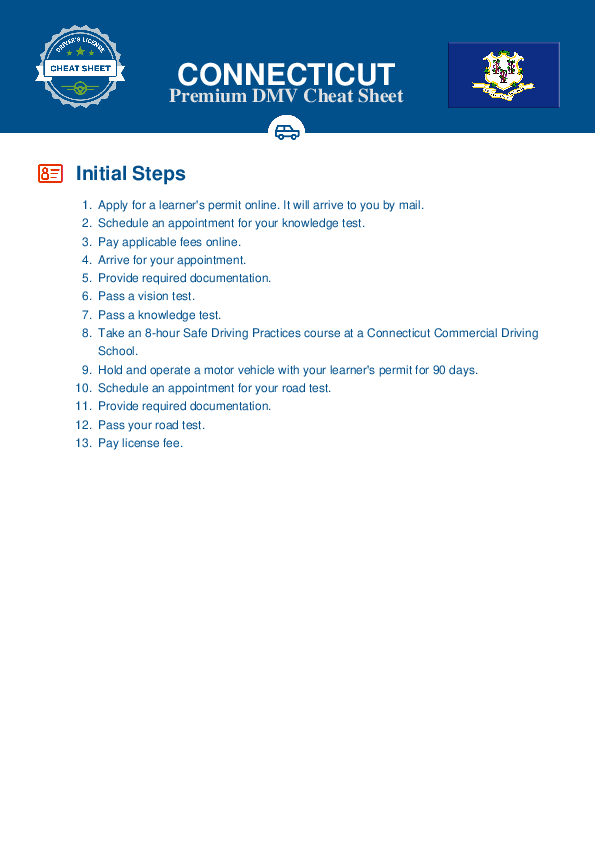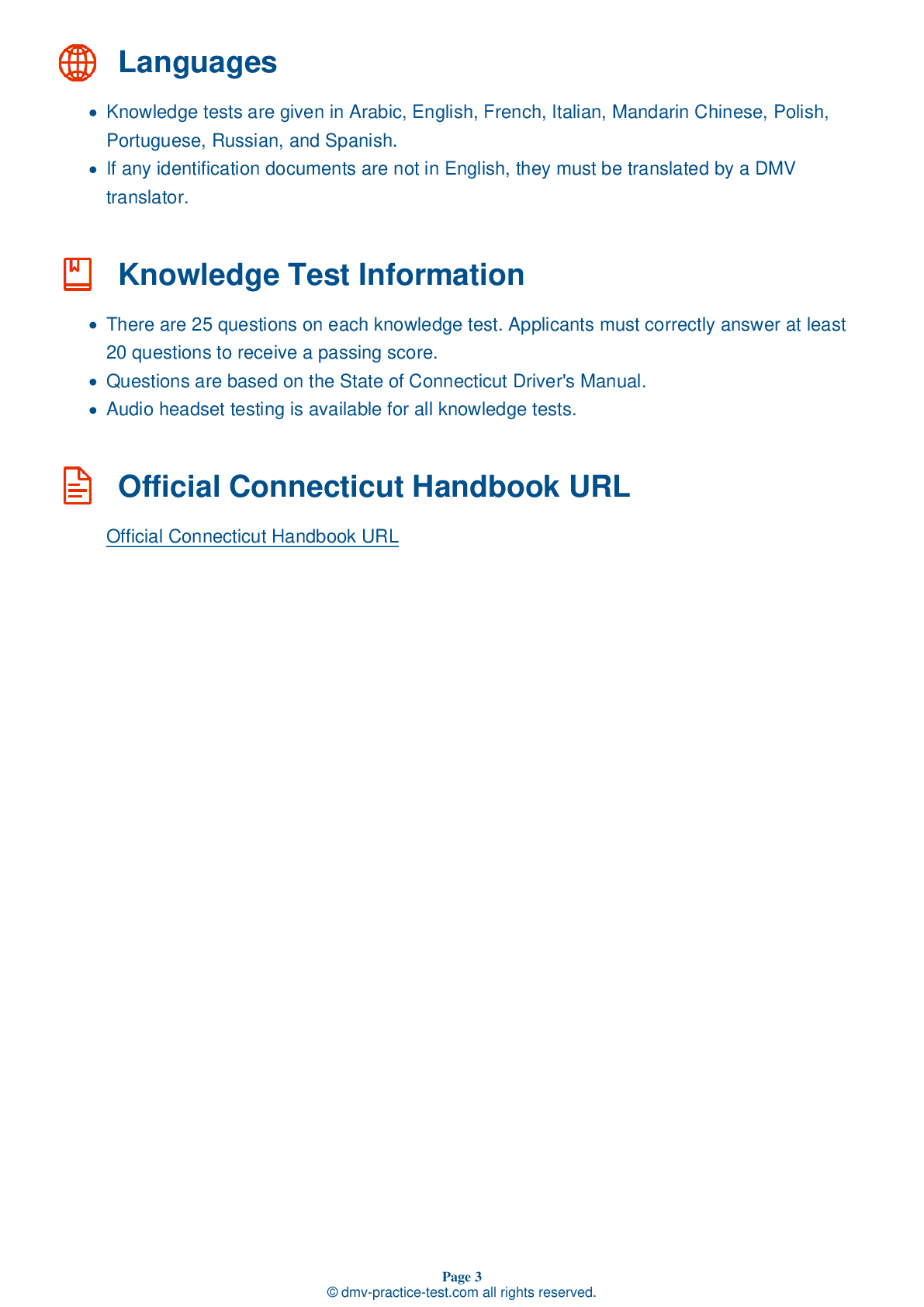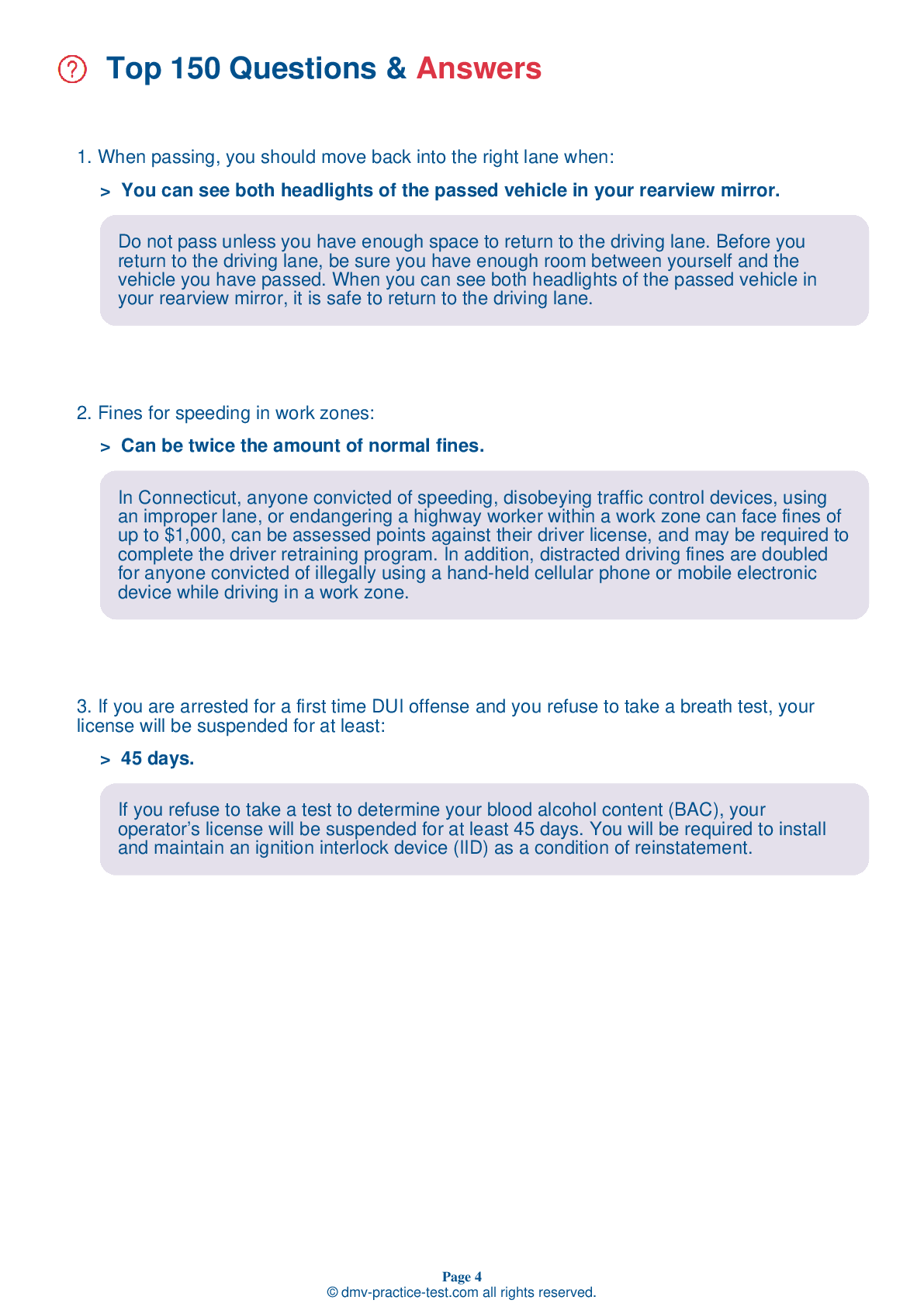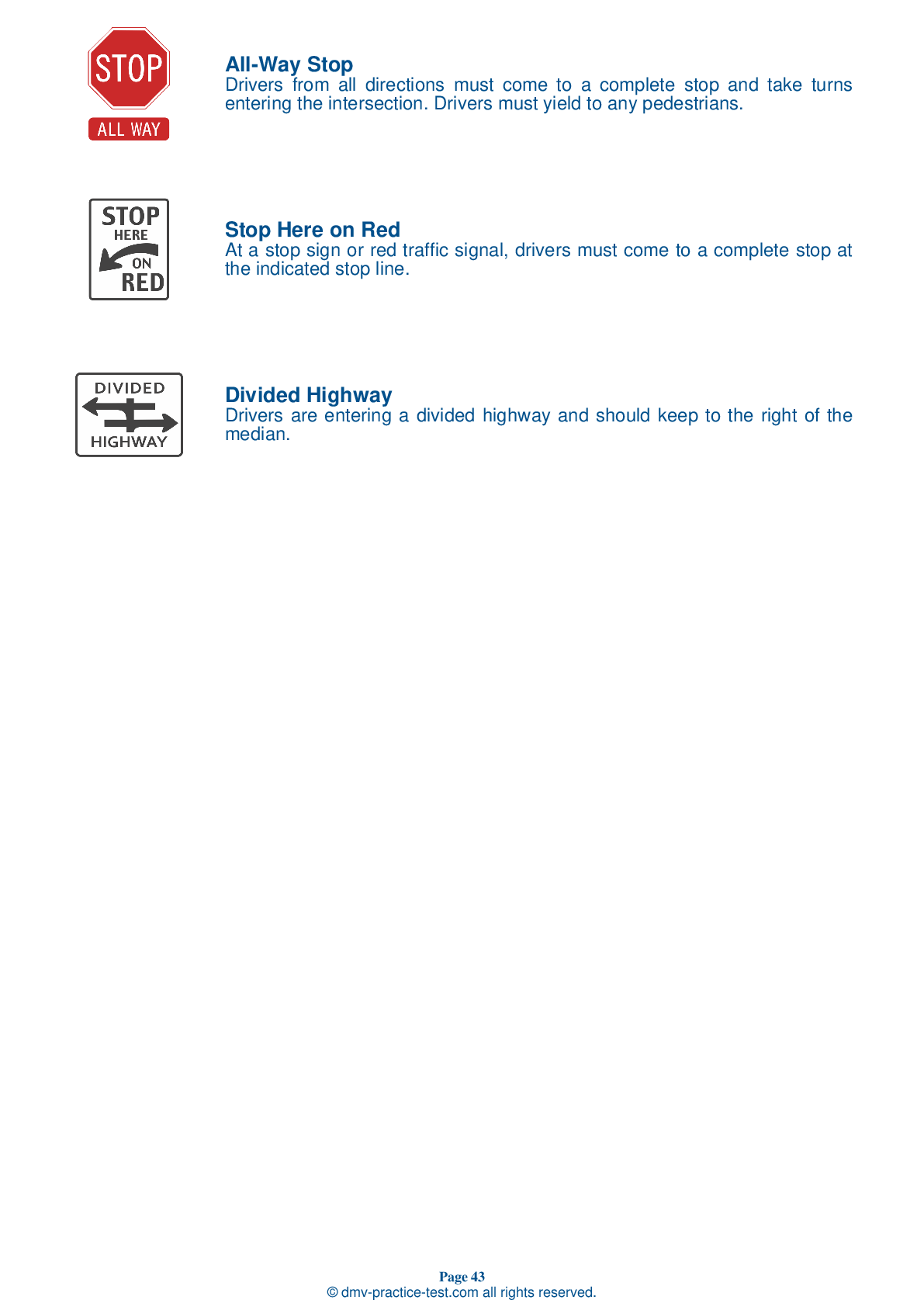FREE Connecticut DMV Practice Test #22
This set of Connecticut DMV practise tests was just updated for January 2024. It includes questions based on the Connecticut Driver Handbook's most essential traffic signs and regulations for 2024. Use actual questions that are very similar (often identical!) to the DMV driving permit test and driver's licence exam to study for the DMV driving permit test and driver's licence exam.
Each practise test question has a hint and explanation to assist you in remembering the concepts. The written component of the official DMV test will include questions about road rules, traffic signs, and driving statutes, as well as information from the Driver Handbook.
To achieve the required passing grade, you must correctly answer 20 of the 25 questions. Take our DMV practise exam to help you prepare for your Connecticut instruction permit or driver's licence.
The DMV exam is available in several languages.
Using any form of testing help will result in an automatic fail, and the DMV may take further action against your driver's licence, so avoid it.
1 . You want to park uphill on a two-way road and there is no curb. Which direction do you turn your front wheels?
When parking either uphill or downhill on a road that has no curb, you should turn your wheels so that the vehicle will roll away from the center of the road if the brakes fail.
2 . If you see orange construction signs and cones on a freeway, you must:
As you enter a work zone, signs and message boards will warn you of workers, slow-moving equipment, and/or closed lanes ahead. You should reduce your speed and be prepared to slow down or stop.
3 . When driving at night, you should:
Driving at night is more hazardous than daytime driving because the lowered visibility makes it difficult to judge speed, distances, and other potential hazards. Increase your following distance to help prevent a potential collision if the vehicle in front of you should stop abruptly. Use your headlights when driving at night, following the rules for proper usage of high beams and low beams.
4 . Various traffic control devices in construction and maintenance work areas are the color:
Orange warning signs are used in and around work zones. Use special caution when you see orange signs, cones, or barriers on a roadway.
5 . Fatigue increases the risk of:
Fatigue causes errors related to speed and distance, increases your risk of being in a crash, and causes you to take more time to make decisions. When you are fatigued, you could fall asleep behind the wheel and crash, injuring or killing yourself or others.
6 . This sign means:
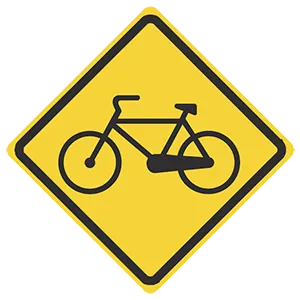
Warning signs are usually yellow with black markings. Warning signs may alert drivers to areas where animals, people, and vehicles are likely to cross traffic.
7 . If you come to a railroad crossing with lowered gates and flashing warning lights, you should:
You must stop at a railroad crossing where signs, warning devices, or flaggers warn you of the presence of a train. It is illegal to drive around lowered gates.
8 . When changing lanes:
Before changing lanes, you should check your side mirrors and look over your shoulder to make sure it is safe to proceed.
See the exact questions that will be on the 2024 Connecticut DMV exam.
99.2% of people who use the cheat sheet pass the FIRST TIME
LT gives us an insight on how the cheat sheet provided her with all the study questions she needed before taking her test.
Joe initially studied with the handbook and failed his test, he eventually found us online, studied and pass his test the first time around.
